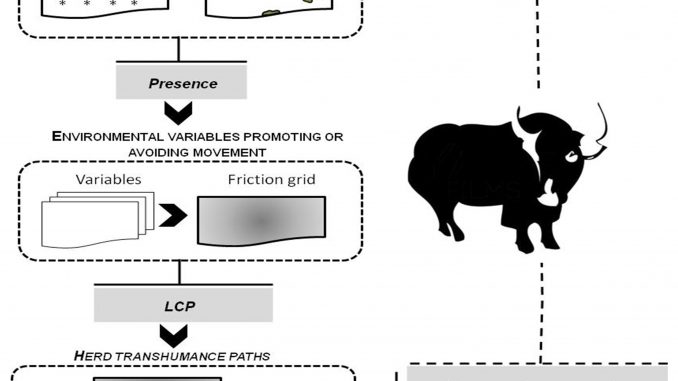
Assessing transhumance corridors on high mountain environments by Least Cost Path analysis. The case of Yak herds in Gilgit-Baltistan, Pakistan
Maaz Maqsood Hashmi1, Ludovico Frate1,*, Syed Moazzam Nizami2, Maria Laura Carranza1
Mountain environments in the world host highly specialized flora and fauna which are vulnerable because of land-use and climate change. Transhumance and other land use traditional practices are present in most of the mountains of the world and management tools able to cope with new socioeconomic settings and environmental changes are urgently needed.
During past centuries, yak (Bos grunniens) herding in Northern Pakistan involved the migration of herds to high mountain international rangelands but the recent establishment of international borders, break the traditional transhumance paths and promoting several ecological problems. In this paper, we propose the use of Least Cost Paths (LCP) algorithm to identify the most efficient corridors of transhumance for yak herds on northern high altitudes of Pakistan. Specifically, LCP was implemented to identify the critical grazing areas and the connecting zones to be accounted in a new management plan for the yaks in the region. The LCP analysis showed that some grazing areas are connected with several paths whereas other areas are connected to a lesser extent. The analyses identified a set of best minimum cost paths able to guarantee local connectivity. We also delineated several medium and low efficient paths that could play a crucial role for maintaining regional connectivity which is essential for reducing the isolation of herds and the consequent inbreeding problems.
The analytical framework implemented in this study allowed to: (1) provide valuable information concerning the movement of yak herds in Gilgit-Baltistan; (2) identify potential corridors that are able to promote herds movement between villages and high mountain rangelands; and (3) identify critical areas for the connectivity of yaks by ranking of the potential corridors according with their length and permeability. The analysis would be extended to other transhumant herds and high mountain areas that are facing socio-political transformations and environmental changes.

Commenta per primo